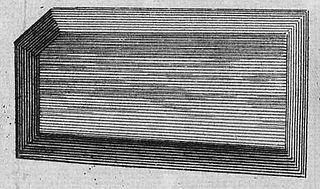Daria-i-Noor
Large cut diamond From Wikipedia, the free encyclopedia
The Daria-i-Noor (Persian for 'Sea of Light' or 'Ocean of Light'[2]),[a] also spelled Darya-ye Noor and Daria-i-Nur, is one of the largest cut diamonds in the world, weighing an estimated 182 carats (36 g).[3] Its colour, pale pink, is one of the rarest to be found in diamonds. The diamond is currently in the Iranian National Jewels collection of the Central Bank of Iran in Tehran.[4] During the reign of Naser al-Din Shah, an elaborate frame was crafted from 457 smaller diamonds and four rubies, crowned by Iran's imperial insignia.[5][6] However, another diamond with the same name in a private collection in Bangladesh.[2]
 | |
| Weight | 182 carats (36.4 g) |
|---|---|
| Color | Pale pink[1] |
| Cut |
|
| Country of origin | India |
| Mine of origin | Kollur Mine, present-day Andhra Pradesh, India |
| Owner | Central Bank of Iran, Tehran, Iran |
Dimensions
It is 41.40 mm × 29.50 mm × 12.15 mm (1.630 in × 1.161 in × 0.478 in) and weighs around 182 metric carats. It is the world's largest known pink diamond.[3] It may have been cut originally from an even larger stone.[7]
History
Summarize
Perspective
This diamond, as is also presumed for the Koh-i-Noor, was mined in Kollur mine in the Golcanda region of Andhra Pradesh, India.[8][2] Its early origins are shrouded in mystery, but it is believed to have been one of the eyes of the Mughal Peacock Throne.[2]
In 1739, Nader Shah of Iran invaded Northern India and occupied Delhi. As payment for returning the crown of India to the Mughal emperor Muhammad Shah, he took possession of the entire fabled treasury of the Mughals, including the Daria-i-Noor, the Koh-i-Noor, and the Peacock Throne.[3]
After Nader Shah's death in 1747, the diamond was inherited by his grandson, Shahrokh Mirza. From there, it fell into the hands of Lotf Ali Khan. After Lotf Ali Khan's defeat at the hands of Mohammad Khan Qajar, who established the ruling Qajar dynasty of Iran, the Daria-i-Noor entered the Qajar treasury. During this time, Naser al-Din Shah Qajar was said to be very fond of the diamond, often wearing it as an arm band, an aigrette, or a brooch, and maintenance of the diamond was an honor bestowed upon higher ranking individuals.[4]
Return to the Indian subcontinent theory
Another theory postulates that the diamond had made its way back to the Indian subcontinent by the 19th century.[2]

Eventually the diamond made its way into the hands of Maharaja Ranjit Singh of the Sikh Empire, where it was kept in the Toshakhana (treasury).[2] After the annexation of the Sikh Empire into the Company Raj, the stone was confiscated by the British alongside other valuables from the Sikh treasury.[2] A reference is made to it in a list prepared by John Login of confiscated items from the treasury.[2] Login valued the diamond at 63,000 rupees, the equivalent of £6,000 in 1840 which would convert to more than £100 million in 2012.[2] Jewelry associated with the diamond were eleven pearls, eleven additional diamonds, and eleven garnets (known locally as choonee).[2] The total weight was 10.8 tolas in the local weight measurement system.[2] The Daria-i-Noor would make its way to London but fail to garner the attraction of the British nobility.[2] Thus, two years later it was shipped back to India to be auctioned off, with the Nawab of Dhaka being the winning bidder.[2] To this day it is said to remain in a Bangladeshi bank's vault.[2]

Possible association


In 1965, a Canadian team conducting research on the Iranian Crown Jewels concluded that the Daria-i-Noor may well have been part of a large pink diamond that had been studded in the throne of the Mughal emperor Shah Jahan, and had been described in the journal of the French jeweller Jean-Baptiste Tavernier in 1642, who called it the Great Table diamond ("Diamanta Grande Table"). This diamond may have been cut into two pieces; the larger part is the Daria-i-Noor; the smaller part is believed to be the 60-carat (12 g) Noor-ul-Ain diamond, presently studded in a tiara also in the Iranian Imperial collection.[1]
See also
Notes
- In Persian, Daria-i-Noor is spelled as دریای نور.
References
External links
Wikiwand - on
Seamless Wikipedia browsing. On steroids.
